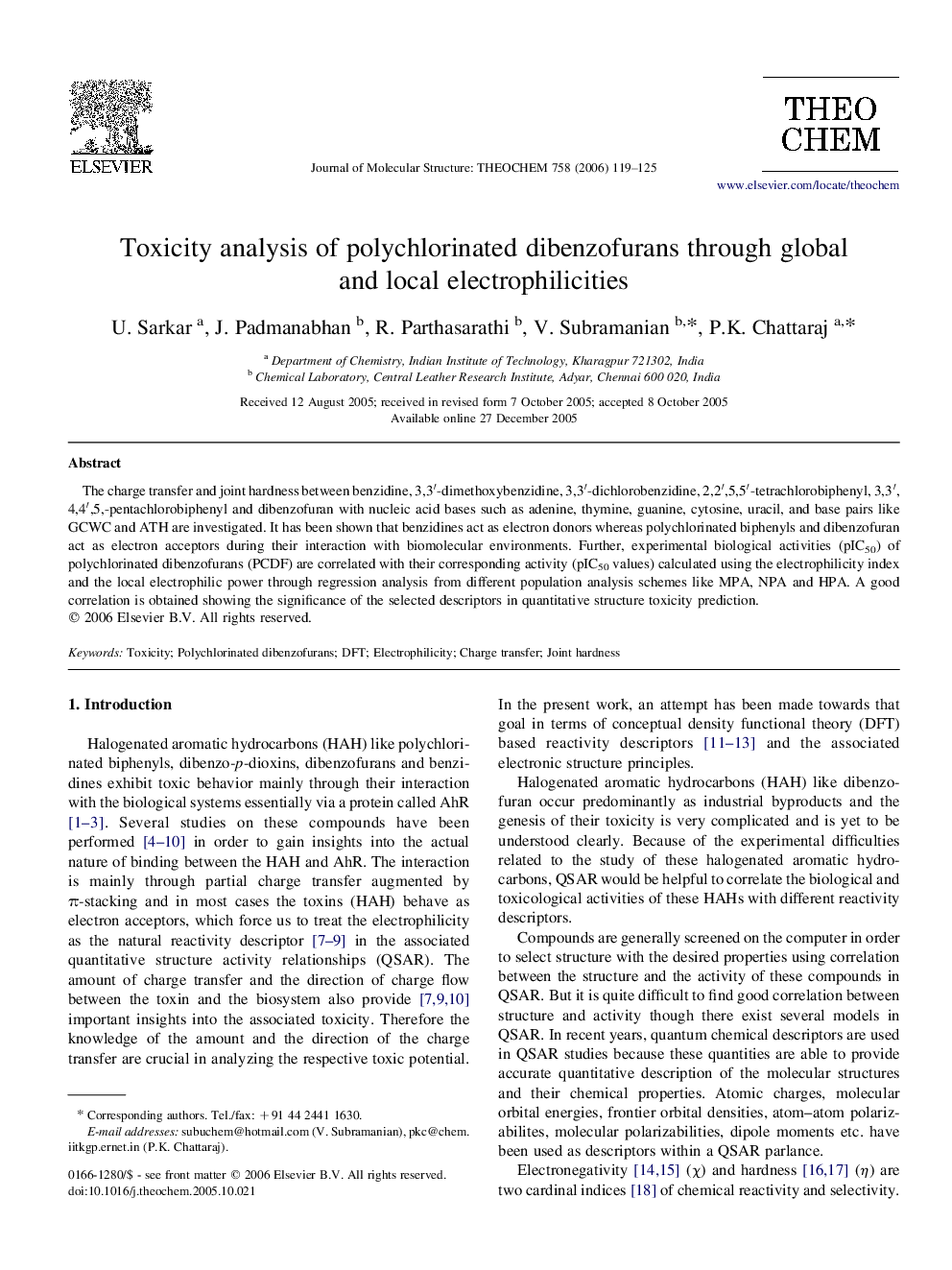| Article ID | Journal | Published Year | Pages | File Type |
|---|---|---|---|---|
| 5419308 | Journal of Molecular Structure: THEOCHEM | 2006 | 7 Pages |
Abstract
The charge transfer and joint hardness between benzidine, 3,3â²-dimethoxybenzidine, 3,3â²-dichlorobenzidine, 2,2â²,5,5â²-tetrachlorobiphenyl, 3,3â²,4,4â²,5,-pentachlorobiphenyl and dibenzofuran with nucleic acid bases such as adenine, thymine, guanine, cytosine, uracil, and base pairs like GCWC and ATH are investigated. It has been shown that benzidines act as electron donors whereas polychlorinated biphenyls and dibenzofuran act as electron acceptors during their interaction with biomolecular environments. Further, experimental biological activities (pIC50) of polychlorinated dibenzofurans (PCDF) are correlated with their corresponding activity (pIC50 values) calculated using the electrophilicity index and the local electrophilic power through regression analysis from different population analysis schemes like MPA, NPA and HPA. A good correlation is obtained showing the significance of the selected descriptors in quantitative structure toxicity prediction.
Related Topics
Physical Sciences and Engineering
Chemistry
Physical and Theoretical Chemistry
Authors
U. Sarkar, J. Padmanabhan, R. Parthasarathi, V. Subramanian, P.K. Chattaraj,
